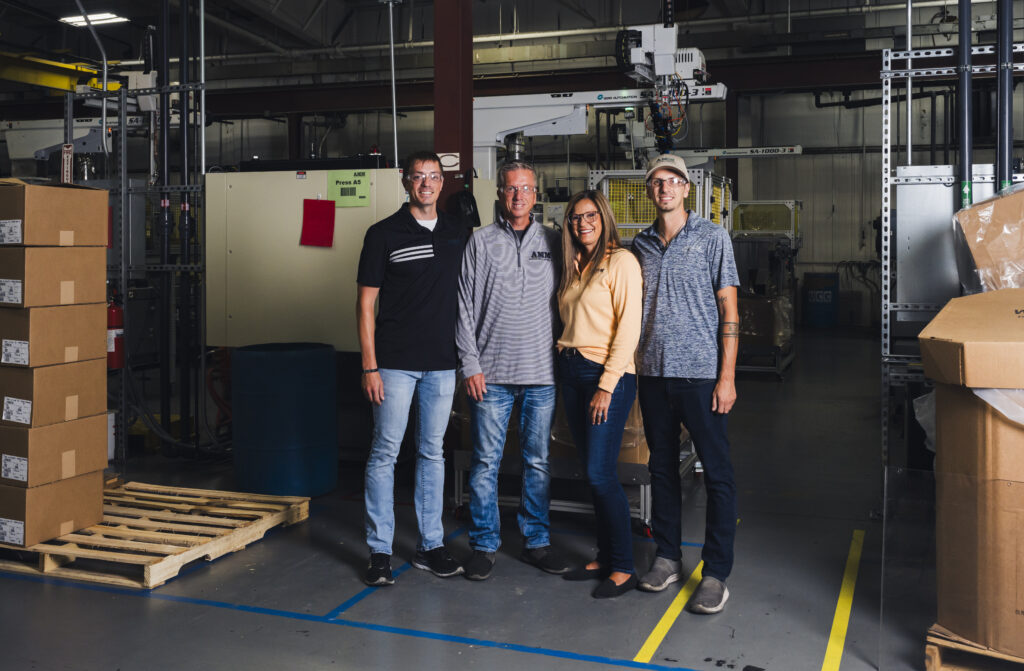Accutech Mold & Machine Paired two Manufacturing Readiness Grants (MRGs) to support Autonomous Robotics, Sensor Technology Adoption and Digitizing Machine Operations
Accutech Mold & Machine
Case Study
Key Stats
In 1996, Darrin Geiger established Accutech Mold & Machine, Inc. as a tool and die shop making molds for injection molding in Fort Wayne, Indiana. Today, Darrin’s wife Kelly holds the reins as President/Owner and Darrin shares responsibilities as Vice President. Two of the couple’s sons — Davon and Dylan — also work in the family business. Davon is Operations Analyst focusing on the data side of the business, and brother Dylan is Project Manager who, in his words, “oversees anything and everything that needs to be overseen,” including automation. His responsibilities, he said, include Accutech’s already significant robotic cells, from engineering and building to programming and troubleshooting.
While Accutech continues building the high-quality plastic injection molds that solidified its industry reputation, it now has expanded to manufacturing plastic injection molded components using the molds it designs and manufactures. Accutech treats the tooling and production arms as 2 separate entities under 1 roof, each with its own unique customer base. “We do share some customers,” Davon explained. “We build tools for other plastics manufacturers and build molds in-house, run the production and ship that completed production work. On that side, we start from scratch and eventually get the production work. We’re not opposed to having customers that are our competitors. It’s the perfect alignment — the customer gets our entire expertise on everything.” The combined businesses have grown to include 33 injection molding presses.
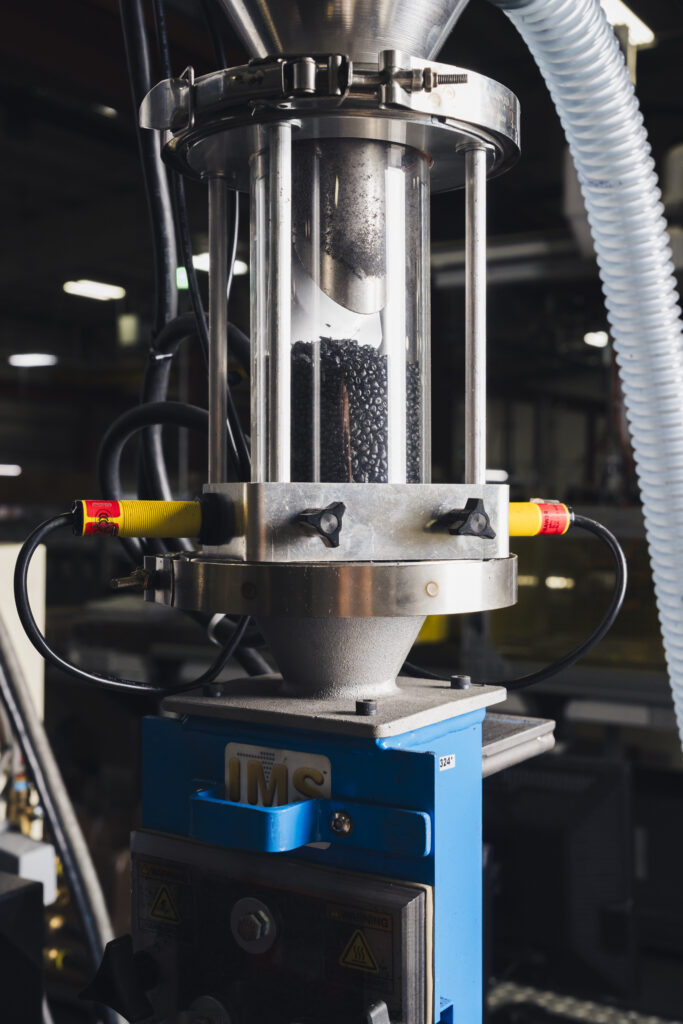
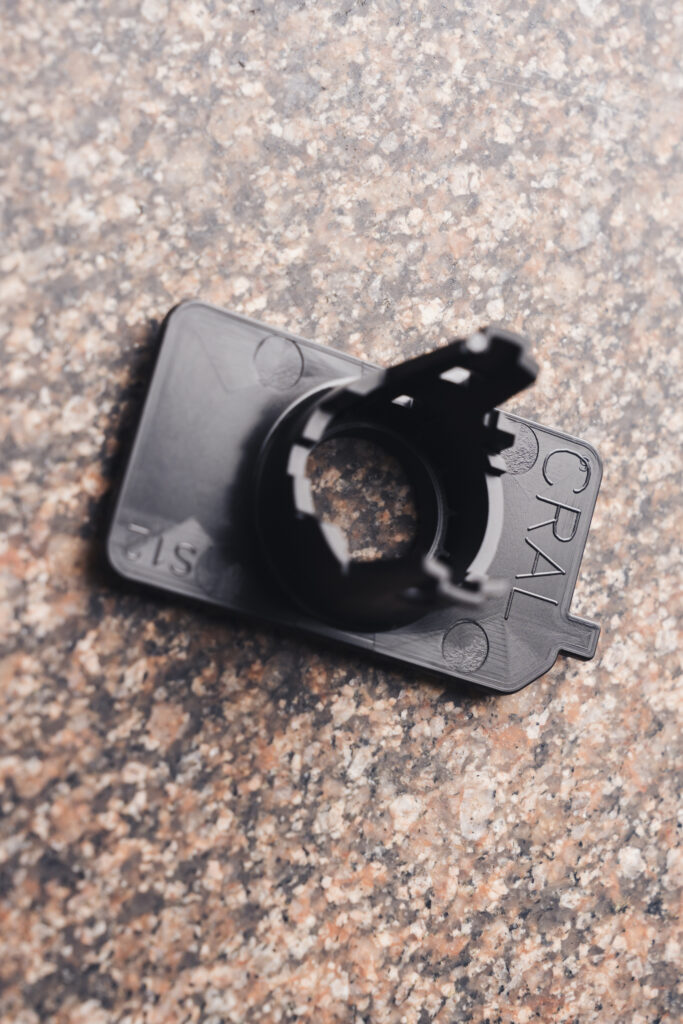
On the production side, Accutech finds that having its own mold tool shop and expertise a tremendous advantage. If a tool does break, it is sent to the other end of the building where the repair can be made immediately, eliminating what would otherwise be 2- or 3-day shutdown. However, Davon cautions, if the part doesn’t come out as intended, there is no outside vendor to hold accountable, and internal quality control becomes paramount to successful operations. Increasing the company’s ability to maintain that quality from the initial mold through to the finished product was the impetus for the MRG-assisted project.
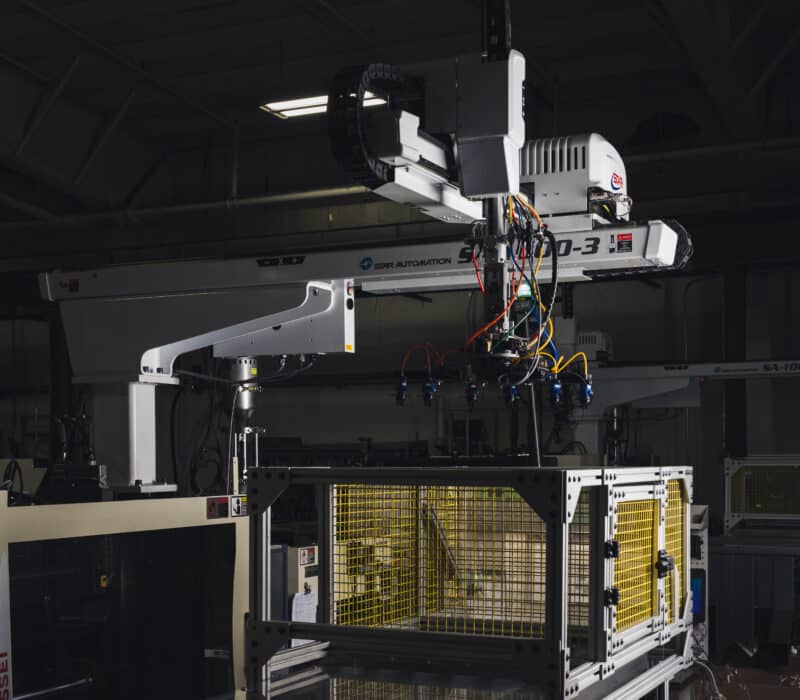
The First Project
It’s a tiny bezel hidden away inside the bumper of a new car – but enhancing its production quality and throughput required advanced robotics and cavity pressure sensing technology.
The bezel at the heart of this project is installed in the bumper of a new vehicle; inside the bezel is a sensor for the vehicle’s backup camera. Creating the tooling for the mass-production of these bezels is expensive, especially injection molding tooling – with costs dependent on the size of the part to be injection molded and the number of parts that will be made over the lifetime of the tool. When this tooling is operational, the injection molding process is both fast and consistent. In production, Dylan explained, “you get a couple of cycles a minute, with multiple parts per cycle, operating around the clock, and that adds up fast. With multiple machines running, it can ramp up to millions of parts quickly.” In addition to this massive production volume there exist subtle differences based on vehicle compatibility, Davon notes. “Each of those bezels has a different contour and there are different parts for different applications, so they must be kept separate. The parts all look the same, but each is different.”
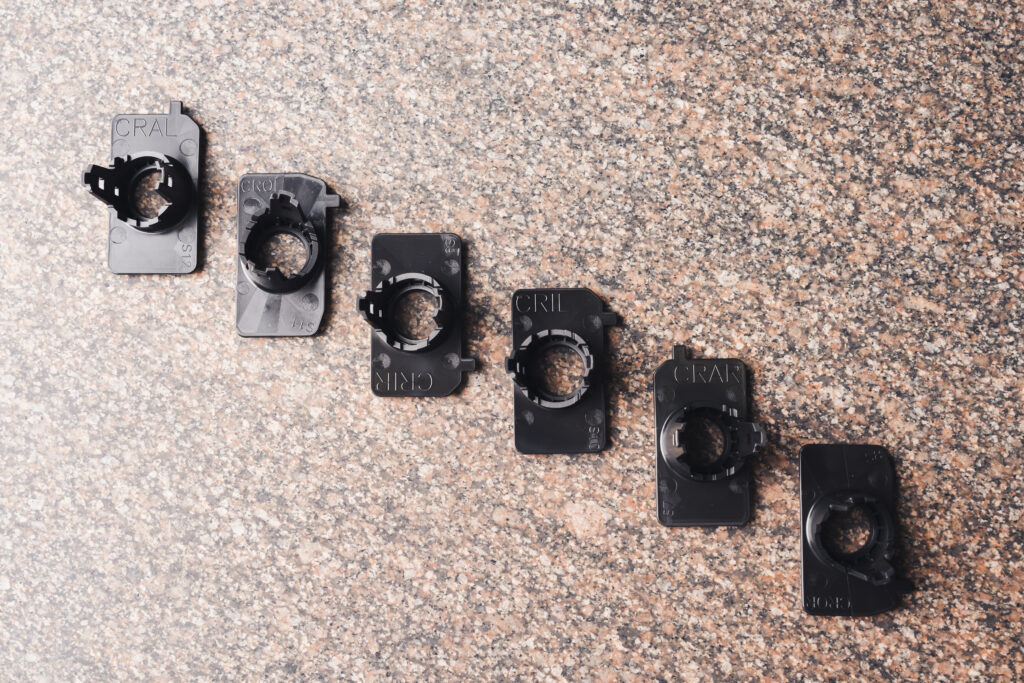
“We needed to find a solution that allowed us to pull the parts straight from the mold and keep them organized by part number,” said Davon. “Into different boxes with as little human contact as possible, maintaining a good part quality assurance without having human eyes on it and without having a person check every single part — all while increasing capacity. And the machine runs close to 24 hours a day, 5 days a week.” The only time it stops is for a mold change.
Accutech’s solution materialized with two discrete, but digitally connected, systems: an automated removal robot with custom end-of-arm tooling, in constant communication with mold cavity pressure sensors that transmit data to the robot, allowing them to “build a process around what is actually happening inside the mold” as the pressure sensor manufacturer (RJG) touts. “By implementing the robots, we’re able to decrease our cycle time which increases our efficiency,” Dylan explained. “The system also solves the problem of how we know that the correct part is in the correct box.”
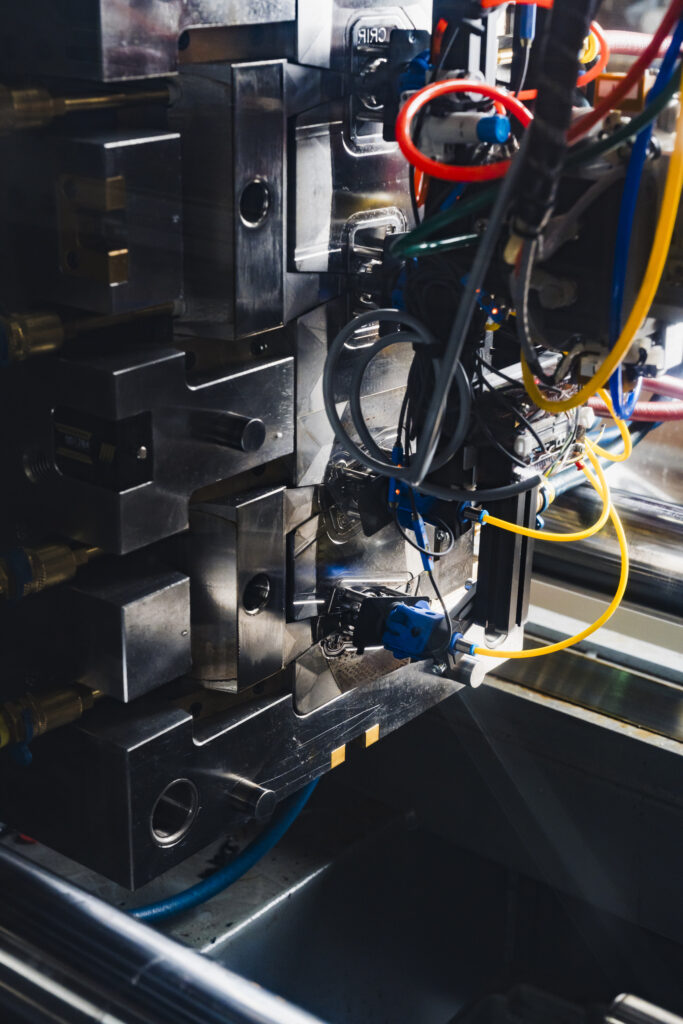
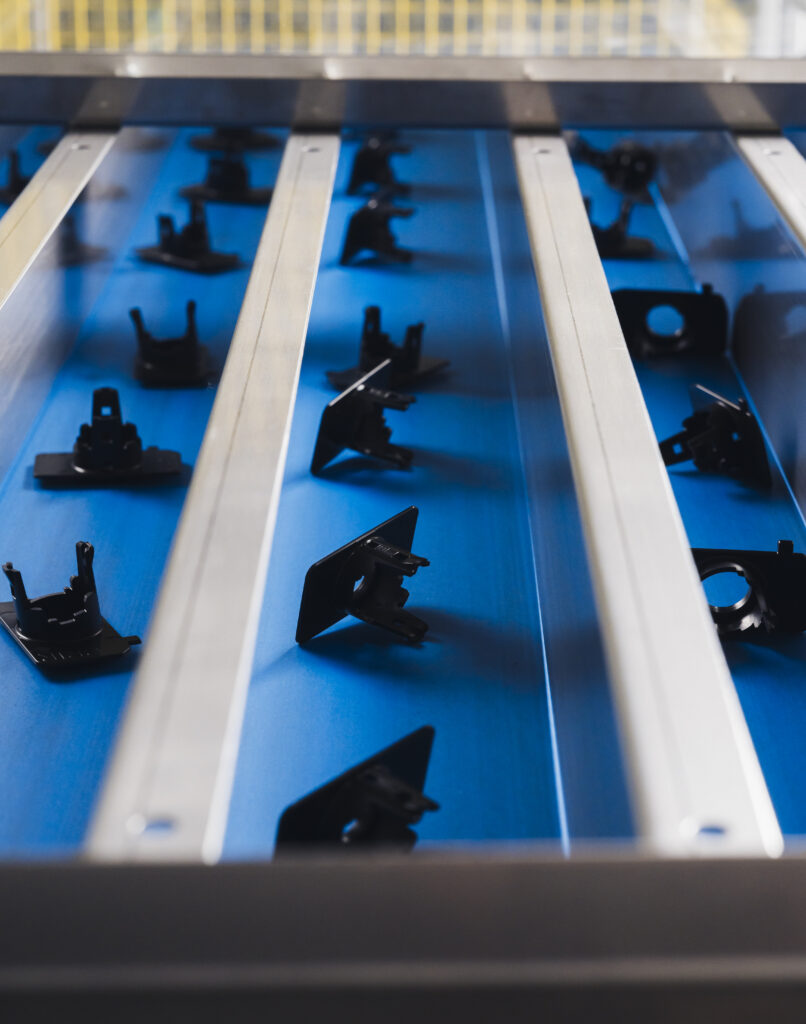
During an injection mold production cycle, the sensors inside the bezel mold are able to translate pressure readings into a highly accurate determination of if the bezels are of acceptable quality. If pressure readings are good, the robot grabs the bezel and places it on a conveyor with separate lines and boxes for each distinct bezel part number. However, if mold pressure readings indicate the part is not good, the robot deposits it into a reject box. The process is performed seamlessly without any human interaction, for every injection mold cycle. Accepted bezel boxes are filled to capacity roughly once per shift, at which point a human operator removes the boxes, puts new ones in place and the cycle continues without interruption. Other than the robot’s initial programming and box tending, that is the extent of human intervention.
The Project had an Immediate Payback.
Previously, there was no way to run at production levels to achieve their customer’s required capacity, and certainly not at the anticipated need just months from the solution’s installation. Capacity increased from running 1-1/2 presses with the MRG-assisted equipment to 6 presses with similar features as Accutech was able to soon independently invest in cloning the automation process across similar lines.
One of the biggest selling points for Accutech is the combination of the company’s mold-making skills with its on-site plastic injection production capability. “We know up front exactly what’s happening, and we have full control over the entire process,” Dylan explained. It is crucial to persuade customers to keep the entire process within Accutech, as outsourcing parts of it to another vendor can result in tools lacking the unique features provided by Accutech’s internal processes. “We strongly recommend that customers allow us to maintain this control. If not, we may be unable to run the part to our quality standards,” he said. “Having these sensors inside the mold is a significant advantage.”
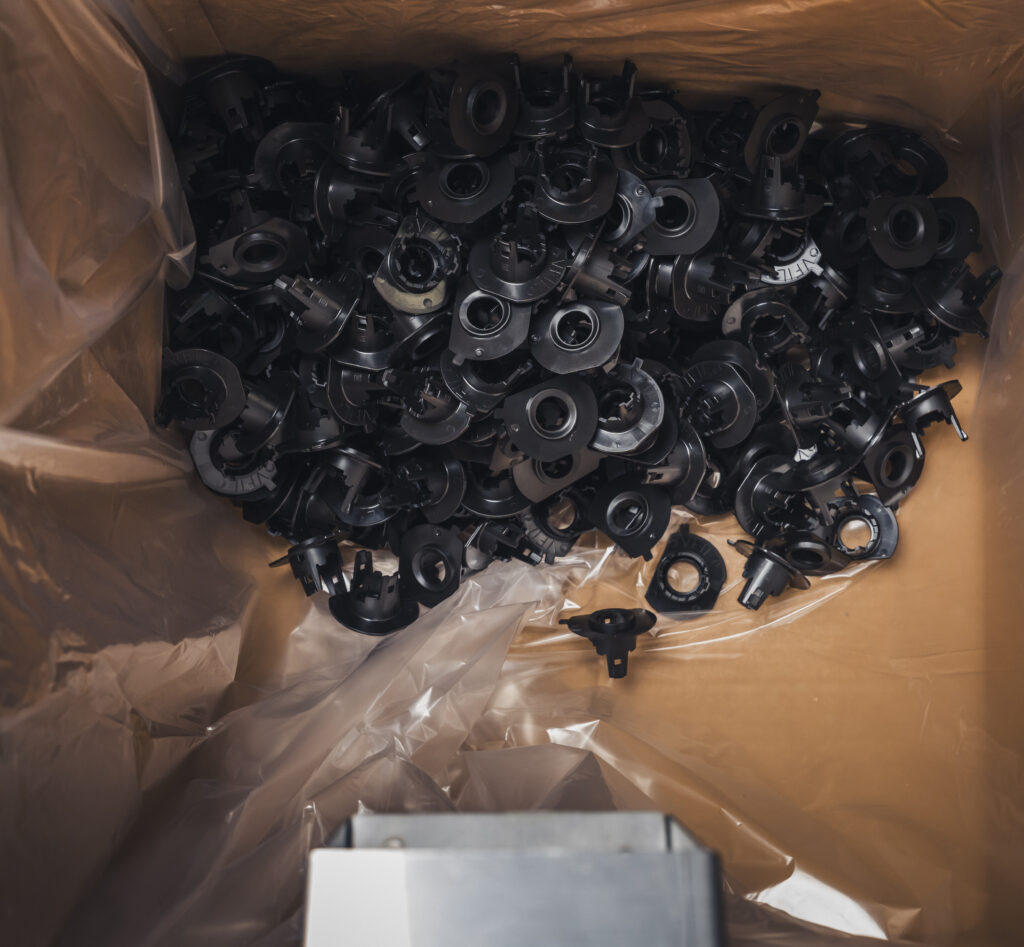
Manufacturing Readiness Grants (MRG) provided by the Indiana Economic Development Corporation and administered by Conexus Indiana are available to Indiana manufacturers willing to make capital investments to integrate smart technologies and processes that improve capacity. With the help of two MRGs totaling $140,000, Accutech Mold & Machine installed autonomous robotics and sensor technology, maximizing production output and speed at its Fort Wayne plant.
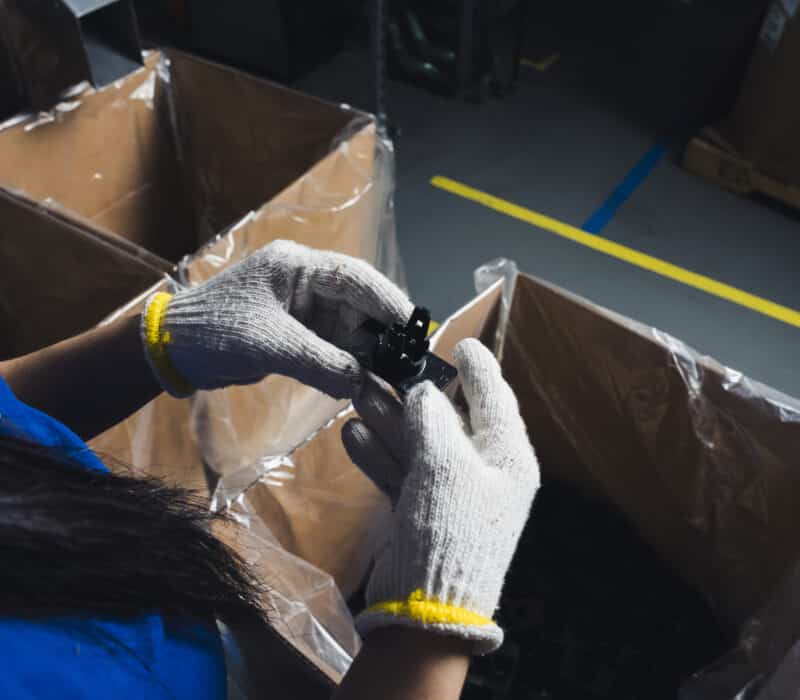
Workforce Implications
Communication is the only way to address workforce fear when new automation enters the employee/employer equation.
Like so many Indiana companies, Accutech’s experience with employee acceptance of new automation finds it’s best when paired with communication. “Obviously, our management team loved it,” Davon said. “We love seeing new opportunities and new types of equipment.” But there’s always one person on the floor whose immediate response is “this robot is going to make me lose my job.”
“We were very upfront that no one is going to lose their job,” he said. “But you’re not going to be a ‘pick and place’ person,” he tells employees as he explains what the automation is going to do. The robotics provide the opportunity for employees to engage in more meaningful tasks. “Today, our people are very receptive to it. They’re no longer scared because they’ve seen the payback and they know the robots are doing jobs the workforce didn’t like doing.” They see it as proof they’re working for a growing company, and growth equals job stability and an improved work experience – “Now everybody wants to see the robot being used on their line.”
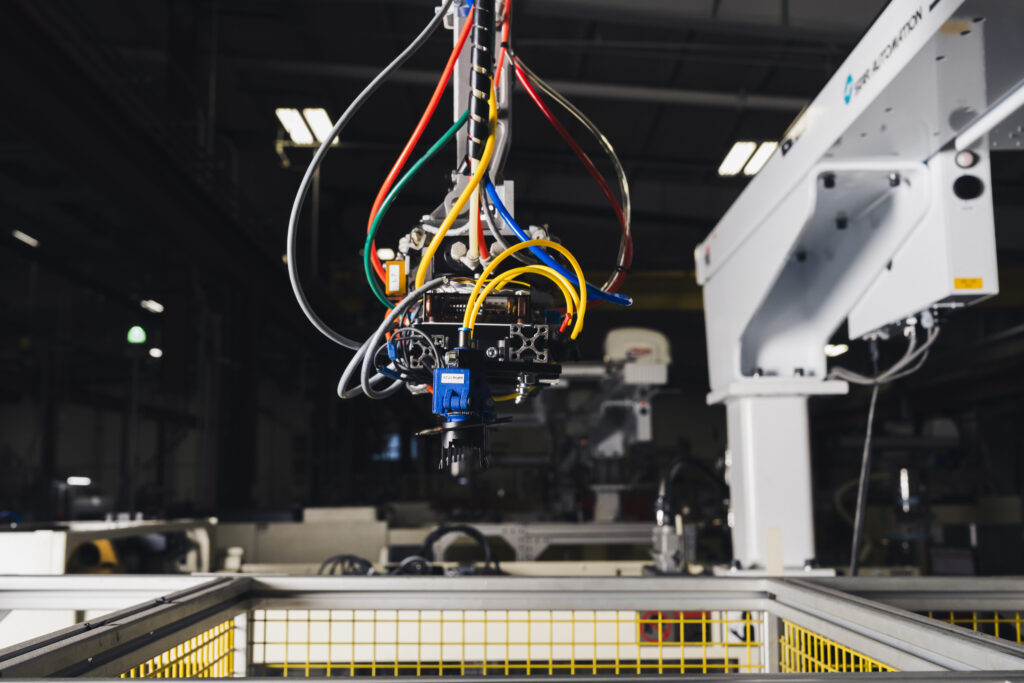
New job opportunities open with the implementation of robotics, too. Every work shift now needs someone to understand what the robot is doing because automation needs human supervision to thrive. In the event of a problem, someone needs to know how to diagnose it quickly and resume production safely. At Accutech, that person gets additional training to become an “automation tech.” Typically, that warrants a pay bump. “It’s a huge asset to us,” Davon said. “It has become a very important position in our company.”
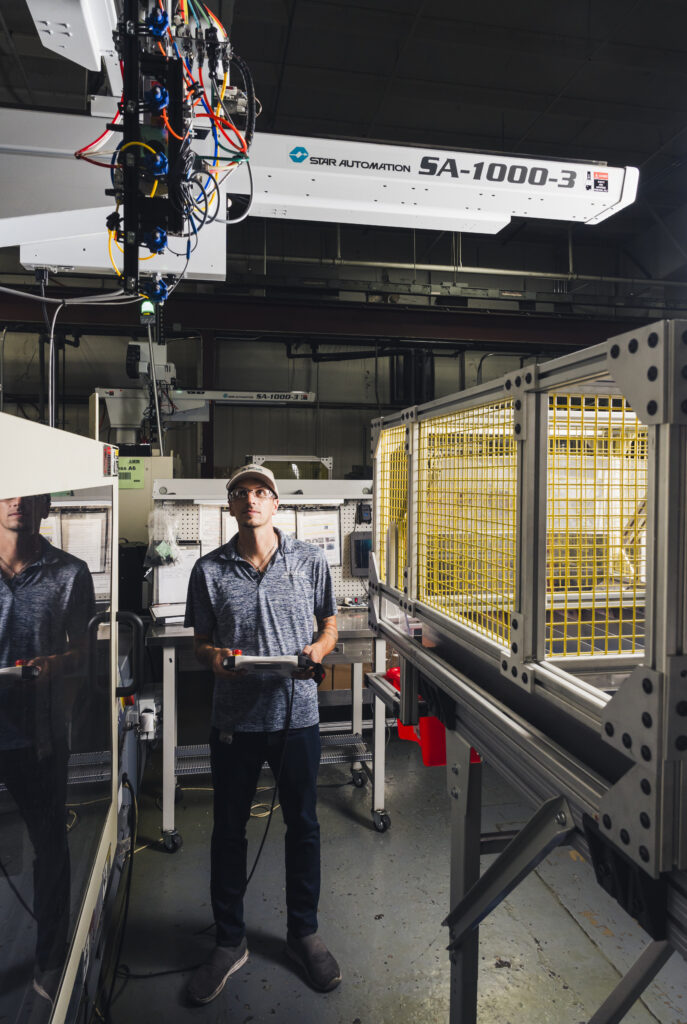
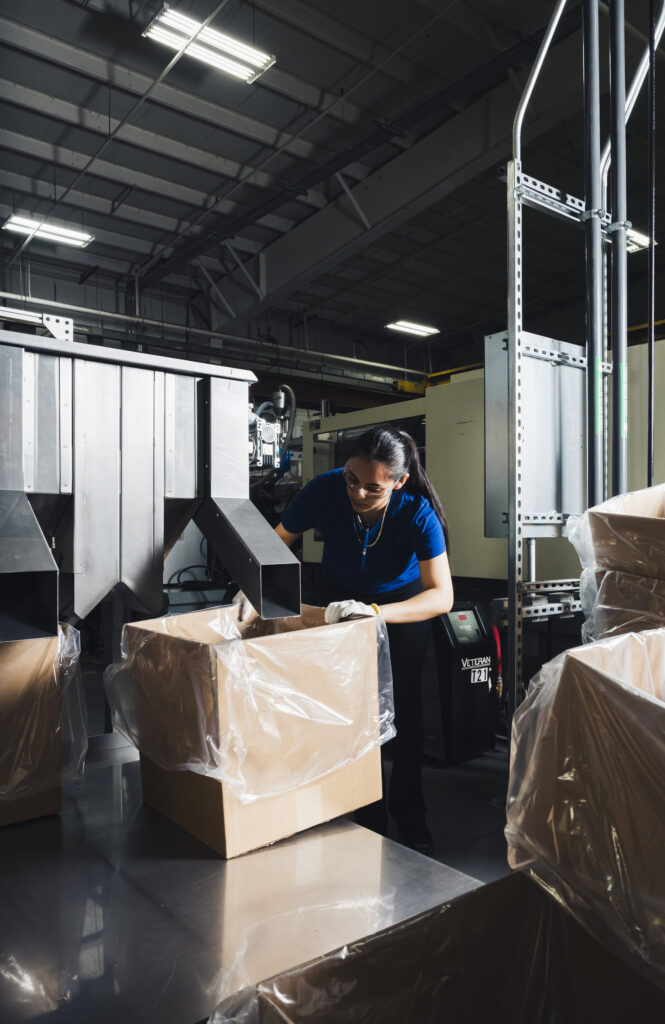
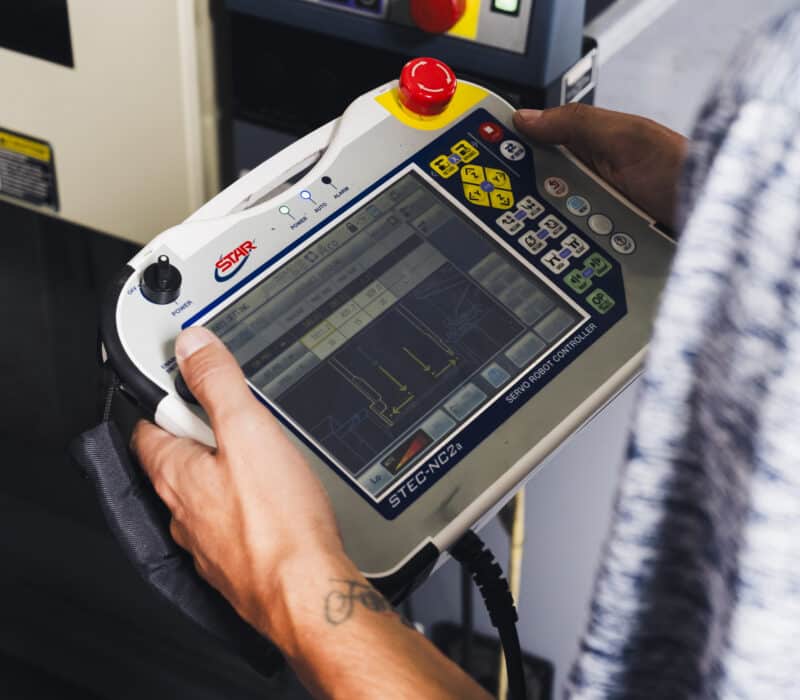
Shared Learnings
Healthy vendor relationships benefit the customer, the company and the workforce. If possible, Accutech’s leaders advise working with a known, trusted vendor.
Star Automation was selected as the vendor for this project – a vendor they have years of experience working with that specializes in injection mold automation. “In addition to their support, using Star Automation has been great for our people,” Davon said. “We’re standardizing our equipment now, where they used to have to know how to run different brands. Now when we move forward we stay with Star because of our experience with them. When training comes along, we can be more specialized in the equipment we’re using for multiple cells. It helps our people be better and more educated.” Through experience, Davon added, Accutech was confident that the people providing customer service at Star were exceptional. “They’re very friendly, very knowledgeable, and they’ve supported us well over the years,” he said. “We’ve never had significant problems with their product, and we’ve enjoyed working with them. It was a no-brainer.”
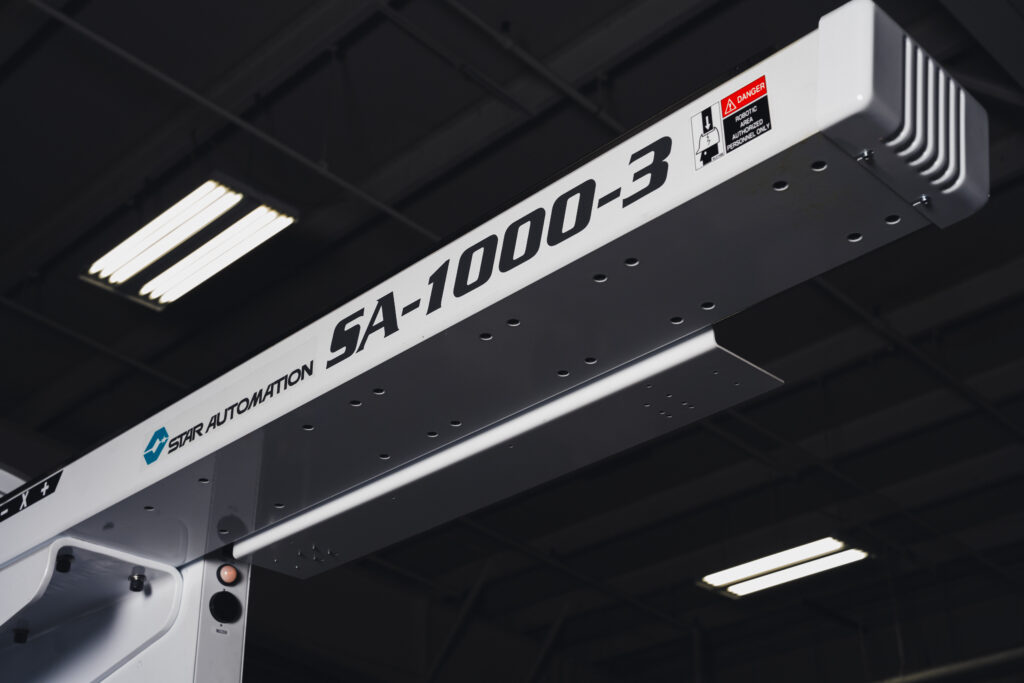
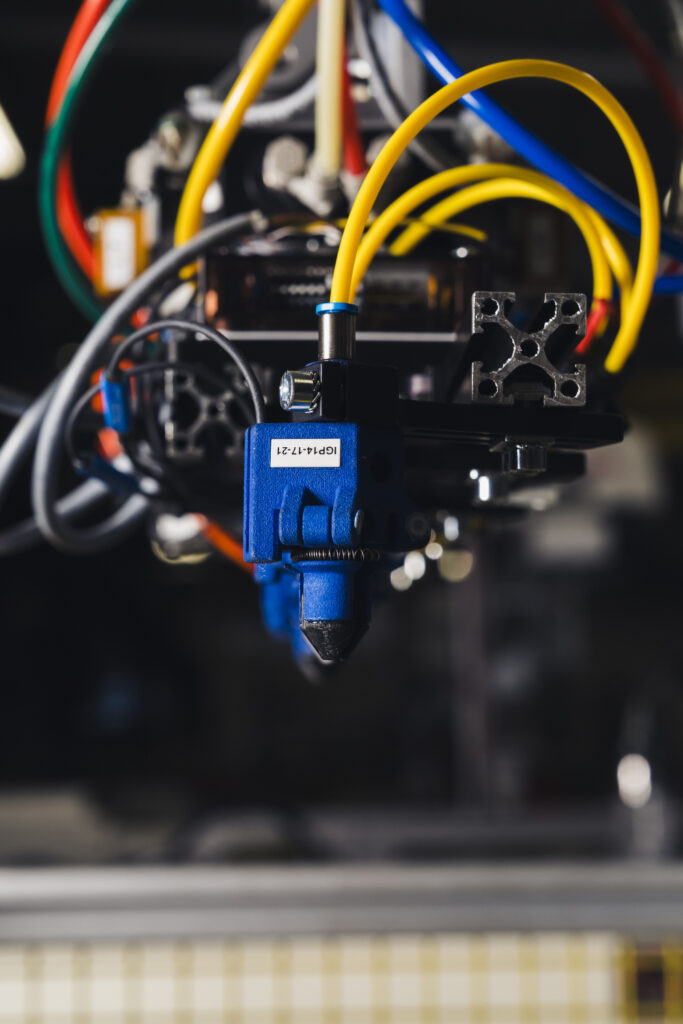
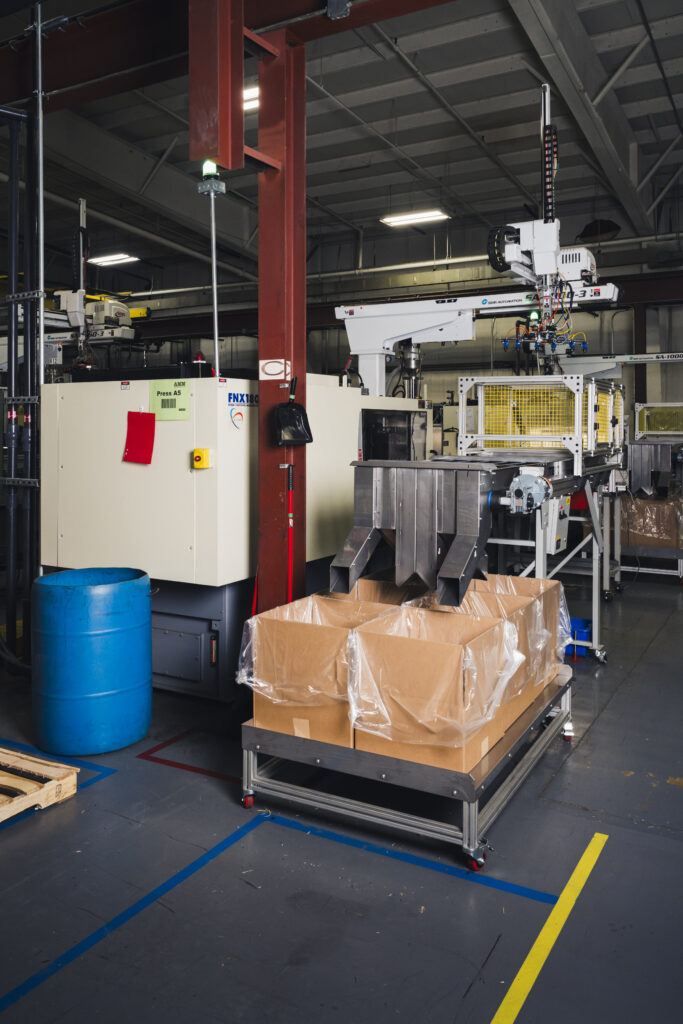
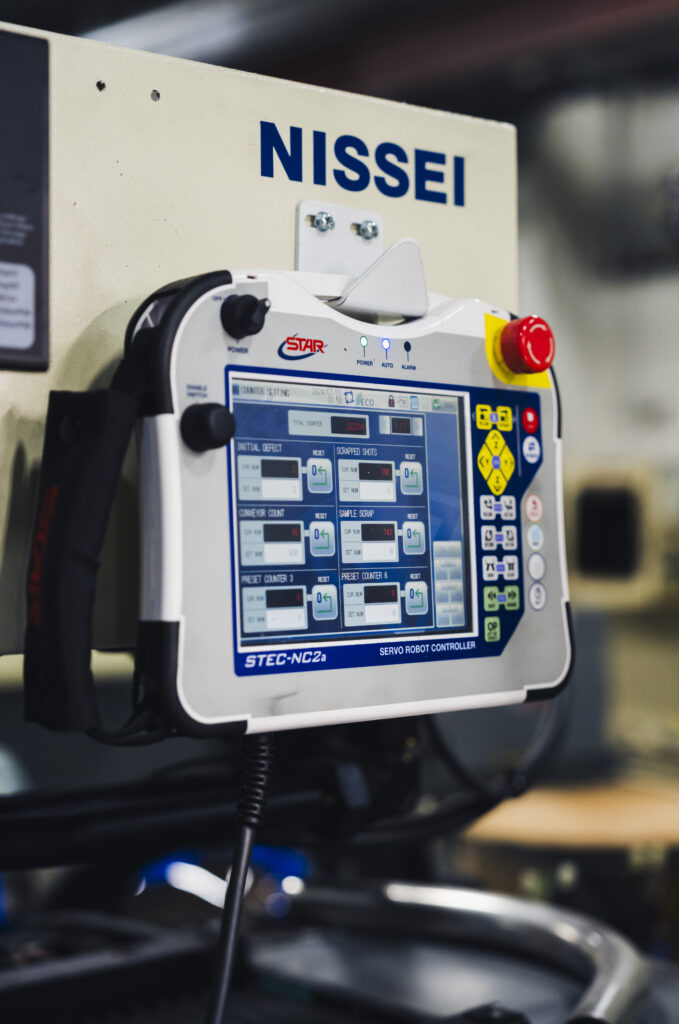
A bit of advice Dylan offered was to remember that automation is always best when it starts out simple – meeting a company’s current production operations where they’re currently at. “This is a fully functional unmanned operation that is so simple; it just works.” Comparing it to other systems that have additional 6-axis robots and vision systems and movement and more “stuff,” he said, “this is just simple. We have so few problems with them, so it’s exactly what we’re looking for when it comes to automation. It just works. It’s simple, and it just works.”
Simple can also mean not over-thinking what’s needed, either. “There are manufacturing situations where it doesn’t make sense to do these mold sensors,” he added. “If you’re running X number of parts or more from this tool, then it absolutely pays for itself. But, it’s an expensive system up front. If you’re only running a couple thousand parts, it’s never going to pay for itself.”
Nothing supports an automation project as well as a Manufacturing Readiness Grant — except a 2nd Manufacturing Readiness Grant
The new robotic project and its successes gave Accutech leadership the incentive to pursue additional autonomous robotic projects. “Not only does it benefit us, but this kind of automation also makes it cheaper for our customers, keeps them more competitive and makes them want to come back to you for repeat business,” Davon said. “We’re really happy that we’re able to provide their solution and that they’re looking into bigger investments, too.”
To that end, Accutech approached the MRG program with a second project centralized around digitizing and consolidating their machine operational data to provide real-time insight, leading to more educated business decisions. “It’s a completely new program for us,” Davon said. “It was a new way to do it. The first grant application process really helped us get our feet wet with the MRG program’s expectations. We’ve seen success and now we’ve moved forward with new programs. And again, the MRG program helped us,” Davon said.
The new project, Davon explained, involved digitizing paperwork. “We don’t have pen to paper anymore,” he said. “Things are done digitally and on the cloud. At first, we were automating our production side of things,” Dylan chimed in. “Now we want to automate everything else that goes into running a business. That’s shipping, receiving, quoting, receiving product, inventory control, tracking all the products from start to finish.” While MRG support is not provided for back-office software such as ERPs or CRMs, Accutech’s proposed system provides wireless connectivity with other automation and manufacturing machines, which in turn directly impacts manufacturing and production. “It’s a way to stay invested in the business,” Davon said. “To have that information coming straight from the machines in real time is such an advantage. It is incredible.”
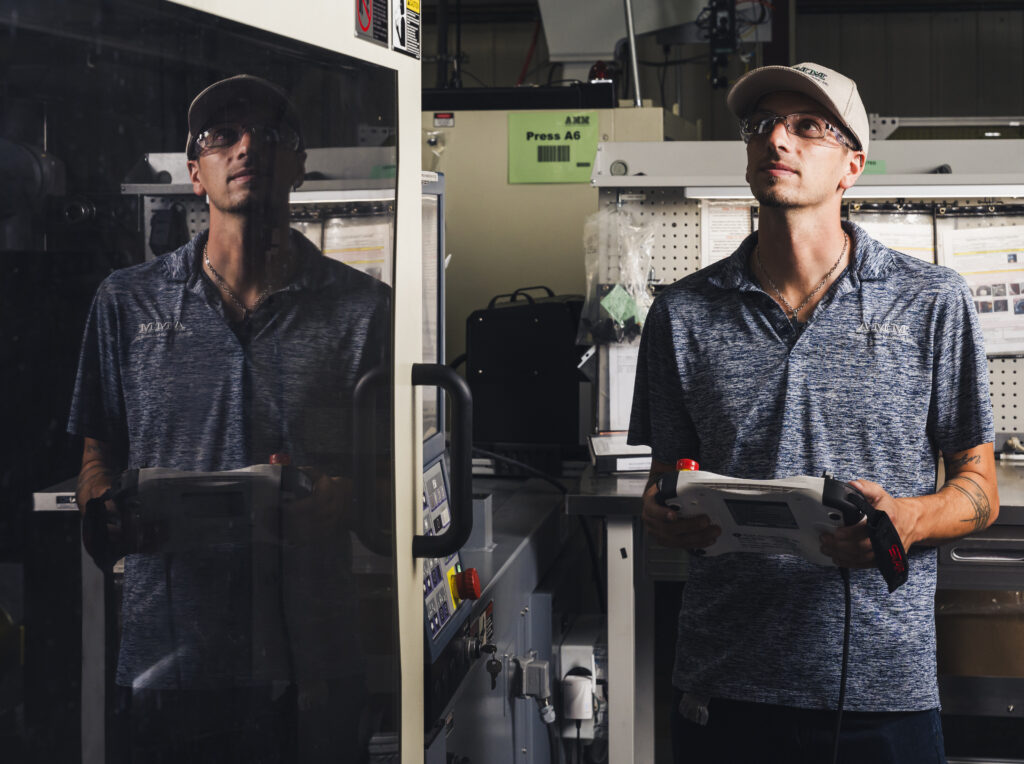
Accutech’s President Kelly Geiger echoed the brothers’ praise for the MRG program. “The grant we received helped us move forward with our automation initiatives,” she said. “It has allowed us to see first-hand how much technology can help us control our manufacturing processes to help produce a better product for our customers. It also allows us to utilize our employees’ talents in new ways. Without the grant, the project would most likely have been delayed or never realized. The MRG helped us take the plunge into automation and we are so excited to continue moving in new directions!”
“Not only does it benefit us, but this kind of automation also makes it cheaper for our customers, keeps them more competitive and makes them want to come back to you for repeat business.”
Davon Geiger
Operations Analyst at Accutech Mold & Machine
